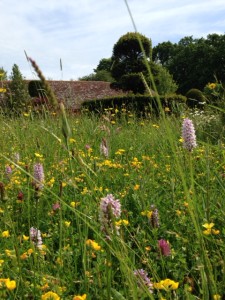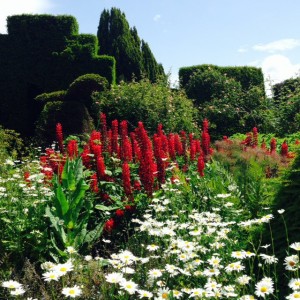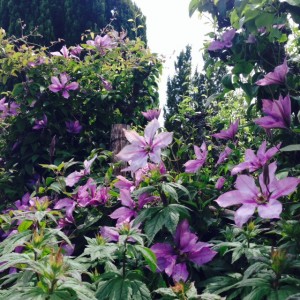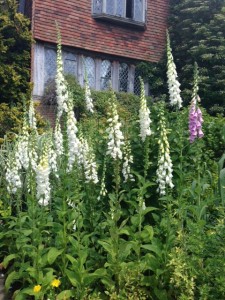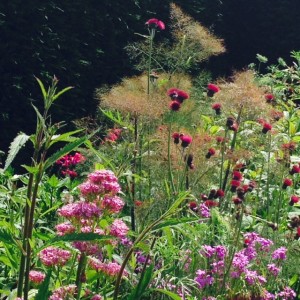We picked a perfect day for our trip to the famous gardens of Great Dixter, and after a meandering bus journey from Rye, through the Sussex Weald, we arrived at the low-key ticket office.
Your first glimpse through the small garden gate is of a long path leading up to the beautiful half-timbered Arts and Crafts house, bordered on either side by pretty meadow dotted with native orchids and buttercups.
The late Christopher Lloyd made the garden famous with his open-minded and experimental style, which is carried on today by head gardener Fergus Garrett, who favours a relaxed, naturalistic planting.
It’s the contrast of formal and informal that makes Great Dixter so refreshing. In the Peacock garden, the architectural yew topiary is softened by the mass of dancing white daisies that surround it, with a huge drift of deep red lupins adding a striking splash of colour.
The paths in the High Garden are so small, with flowers towering up either side of you, it’s like being lost in an English garden jungle. Often a riot of colour, with geraniums, forget-me -nots and poppies roaming free and giant fennels, thalictrum aquilegifolium, and even flowering parsnips swaying airily above. Free-standing rose briars and rambling clematis add to the untamed feel.
I have to admit, I was drawn to the soft, romantic border in the vegetable garden, a harmony in pinks and purples, with its repeated tall feathery bronze fennel, mauve valerian and splashes of hot pink plume thistle ‘Atropurpureum.’
Yet it’s only by experimenting that you can find surprising new plant combinations and Great Dixter is a lesson in letting your gardening hair down and giving it a go. It’s like a breath of fresh air.

